Zucchini is a popular summer squash that produces an abundant harvest. Its fast growth rate and versatile uses make it a favorite for home gardeners While zucchini is traditionally grown in gardens, you can also grow it successfully in containers When choosing pots for container grown zucchini, size matters. Read on to learn the ideal pot size for zucchini and tips for getting the most from your container-grown plants.
Why Pot Size Matters for Zucchini
To produce a prolific harvest, zucchini plants need ample room for their roots to spread out and take up nutrients and water Their large, sprawling foliage also requires adequate space. Crowded containers restrict root and plant growth, resulting in reduced harvests
Small pots also limit the amount of soil available to the plant. Zucchini are heavy feeders that quickly deplete nutrients. Their shallow root systems depend on a large soil volume for a steady supply. Skimping on pot size often results in stunted, unhealthy plants.
Lastly, too-small containers dry out rapidly and make it difficult to maintain ideal soil moisture. Inconsistent watering encourages problems like blossom end rot on the developing fruit.
For all these reasons, pot size significantly impacts the growth, yield, and health of container-grown zucchini.
Recommended Minimum Pot Sizes
Most gardening resources recommend a minimum 12-inch pot diameter for zucchini. However, this tight squeeze allows just enough room for the roots and often results in disappointing harvests.
A minimum 18-inch diameter pot or container provides ample room for a single zucchini plant’s root system and foliage growth. This gives the roots and plant the space they need to thrive. An 18-inch pot contains around 5 gallons of soil, sufficient for zucchini’s needs.
For multi-plantings, expert gardeners suggest sizing up to a half whiskey barrel or 20-30 gallon container. This allows each plant enough personal space. It also provides a large soil volume to supply sufficient nutrition.
Ideal Pot Size for Prolific Harvests
To maximize harvests, 24-inch diameter containers or larger are ideal. The extra room encourages vigorous root and plant growth. This results in higher yields over the season.
For multi-plantings, 45 gallon containers like wine barrels allow 3-4 plants with ample elbow room. The larger soil volume also extends the period between replenishing nutrients.
Tips for Growing Happy Container Zucchini
Follow these tips in tandem with an appropriately sized pot for abundant zucchini harvests:
- Site containers in full sun (at least 6 hours daily)
- Use a high quality potting mix
- Add slow release fertilizer to the soil
- Water when the top 1-2 inches of soil become dry
- Feed monthly with a balanced liquid fertilizer
- Support vining types with trellises
- Harvest fruit regularly at 6-8 inches long
With the right practices and properly sized pots, container gardeners can readily grow bountiful zucchini. Aim for at least 18-inch diameter containers for each plant. For the highest yields, 24-inch or larger pots give zucchini room to thrive.
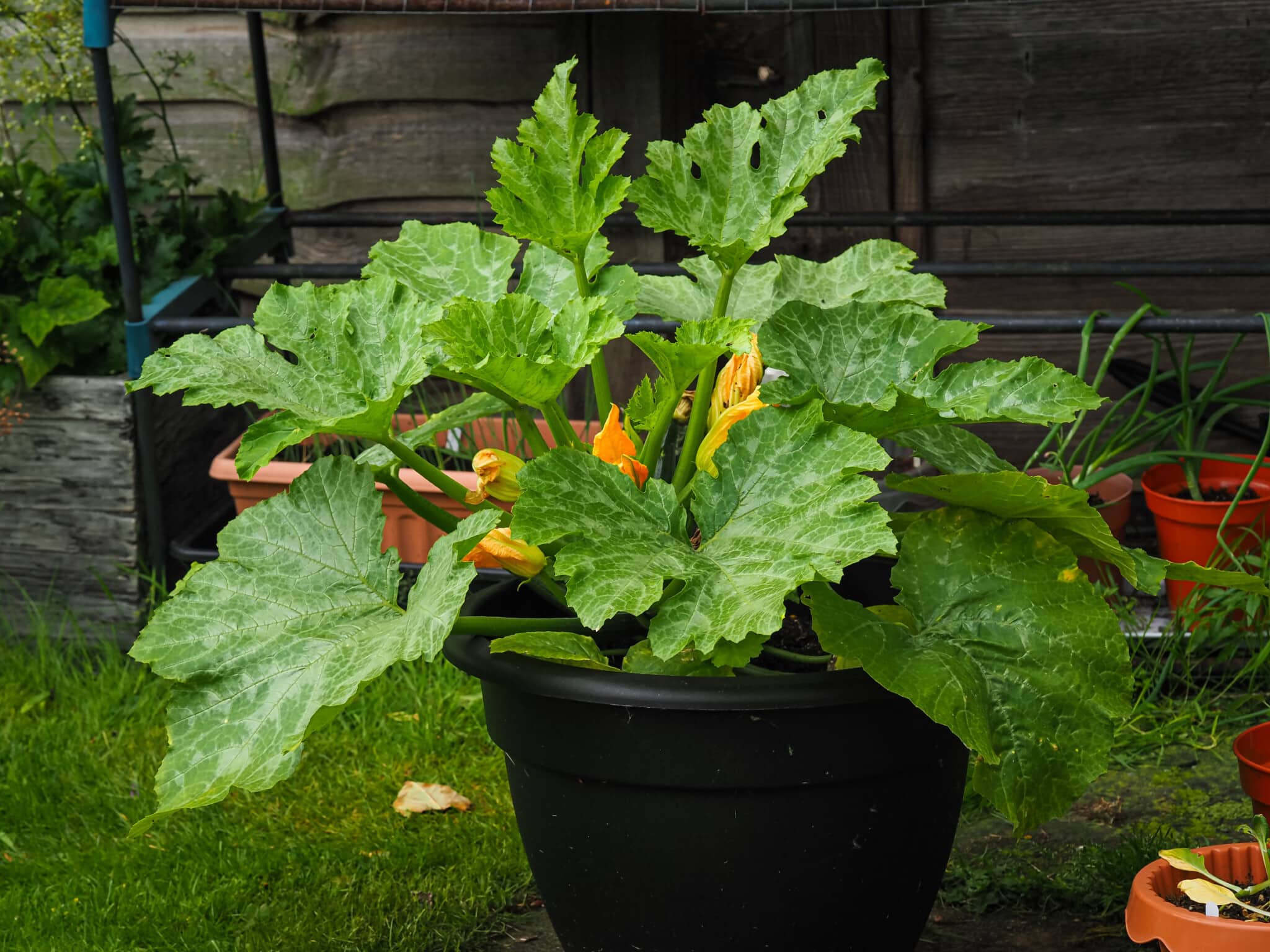
Planting Zucchini: Sun, Water, Soil
The great part about growing zucchini in containers is that you can place your pots anywhere in your yard, to get the best sunlight. Zucchini needs 6 or more hours of sun each day for maximum growth.
When planting in containers, the soil can dry out fairly quickly. It’s a good idea to mulch the soil to conserve water, as in the picture below.
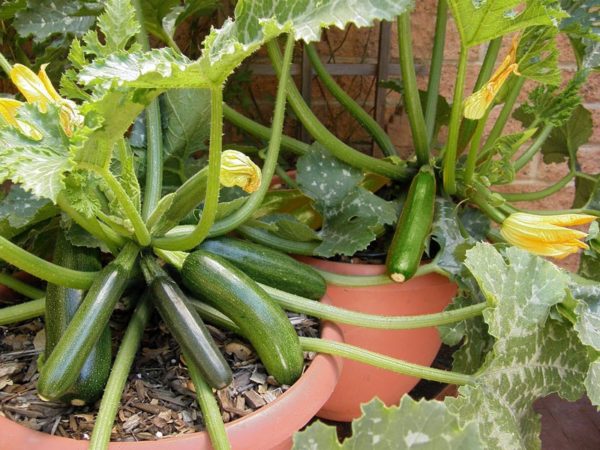
You may need to water daily–stick your finger in the soil before watering. If the soil is damp or wet about two inches below the surface, you don’t need to water. If the soil is dry, then water the base of the plant gently with a rain wand (I love my Dramm Rain Wand) or a watering can. Don’t water the leaves because it can encourage powdery mildew (see below), which can ruin your plants.
The leaves may wilt on a hot day, but this doesn’t mean they need to be watered right then–it’s how the plants conserve water. The leaves should be refreshed by the morning.
Please don’t scoop up a bunch of dirt from your yard for your container of zucchini. Garden soil is too dense and could have fungus, microbes, seeds, bugs, or other critters that will damage your plants.
It’s important to choose the right soil for your container garden, so your vegetables will grow well. Because the plants are growing in a confined space, you want to be sure the soil is the very best it can be. Here’s how to choose the best soil for your container garden.
Because zucchini has relatively shallow roots, you’ll need a container with drainage holes that’s about 12 inches deep and at least 12 inches across (approximately 15 gallons).
I particularly like this planter from Bloem which has a self-watering insert. If you think you’ll need to move your pots during the growing season, you can also get this nifty rolling saucer to put under the planter.
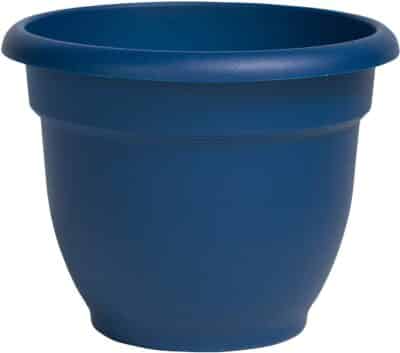
Plant your zucchini seeds or seedlings in the spring, when soil temperature is between 70-85°F. Not sure when you should plant? You need a vegetable planting schedule that’s customized for your area and climate. Click the to get one for your garden.
If you’re planting from seed, make a hole about 1” deep, plop the seed inside, and pat the soil over gently. Your seeds will sprout in 7-10 days. If you’re planting a seedling, make a large hole about 2” deep, loosen the roots of the seedling, and place into the hole. Fill the hole with soil and pat gently.
All squash plants have large leaves and really like to spread out. Plant one zucchini per pot, so there’s room for the roots to grow and for the leaves to spread.
Zucchini plants need pollinators. If you don’t have a lot of bees in your garden, plant some early-blooming flowers like borage or alyssum near your squash. You can plant them in the same pot, or in a neighboring pot. The bees will find their way regardless.
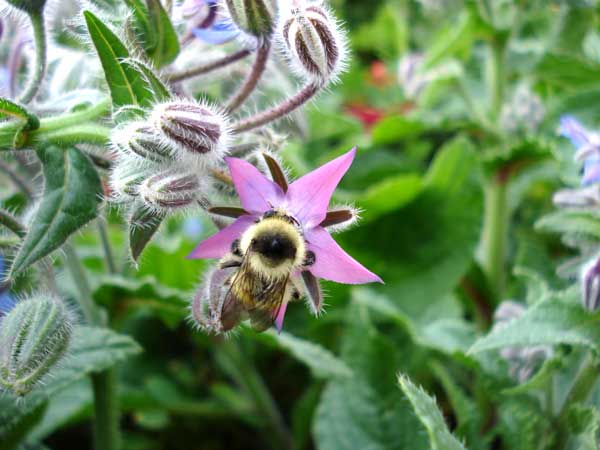
Unfortunately, there are a handful of bugs who like to eat zucchini. The most common ones are squash bugs, vine borers, and cucumber beetles. Most of these can be controlled or managed by natural methods.
Squash bugs are common in the garden, because they like to eat zucchini, pumpkins, winter squash, even cucumber. They lay tiny eggs in neat little lines on the underside of leaves–if you see these, squish ‘em.
In fact, if you see them at any stage of their life cycle, it’s best to squish them. Here’s more info on how to get rid of squash bugs naturally.
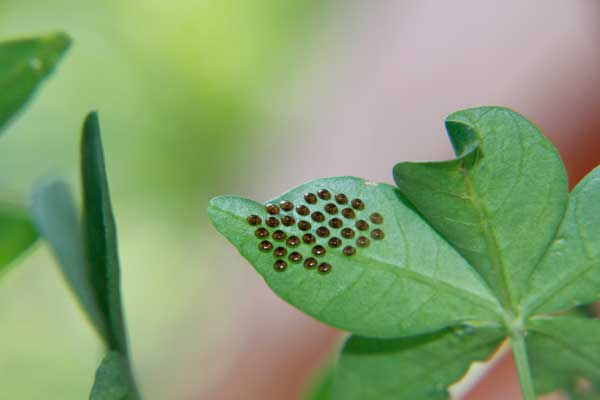
Vine borers spend the winter in the soil and lay their eggs at the base of the stem. Then the caterpillars hatch, bore a hole into your tender seedling, and eat it to death. Because you’re using fresh soil just for container gardening, these shouldn’t be a problem for you.
But just in case–here’s how to prevent squash vine borers naturally.
Cucumber beetles look like ladybugs, but they’re yellow and black instead of red and black. They spread disease, so if you see them you want to get them under control ASAP. Spinosad is a soilborne bacterium that is helpful for this.
Powdery mildew is a fungus that could infect your plants (usually near the end of the season). The leaves look like they’re covered with a white or gray powder.
Treat infected plants with neem oil spray or–believe it or not–milk. Mix 1 cup of milk and 1 cup of water; add a few drops of dish soap and spray the plant 1-2 times per week. Do not compost the plants after harvest.
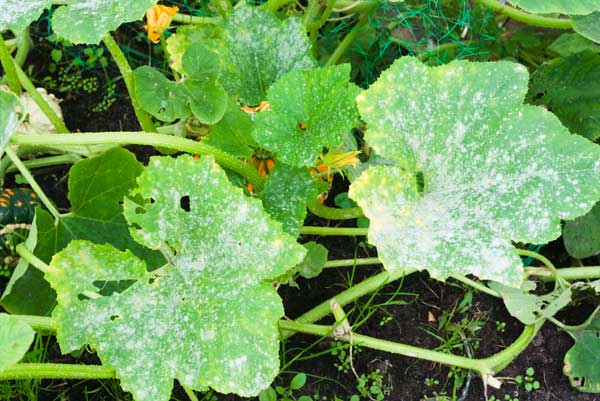
How To Grow Zucchini In a container | 3 Simple Tips | Works for Zucchini or Squash | #gardening
FAQ
How big of a pot do zucchini need?
Because zucchini has relatively shallow roots, you’ll need a container with drainage holes that’s about 12 inches deep and at least 12 inches across …Oct 9, 2023
How many zucchini plants can I put in a 5 gallon bucket?
-
Space Requirements:Zucchini plants can grow quite large, so they need ample room for their roots and foliage to spread.
-
Pollination:Zucchini plants rely on pollination to produce fruit. Planting two plants in a 5-gallon bucket can help ensure pollination, as they can pollinate each other.
-
Container Size:A 5-gallon bucket provides enough space for one or two plants to thrive, but overcrowding can lead to poor growth and fruit production.
-
Soil Volume:The soil volume in a 5-gallon bucket is sufficient for one or two plants to develop a good root system.
What should not be planted near zucchini?
Potatoes can also spread diseases such as late blight, which can also affect zucchinis. Cucumbers and pumpkins should not be planted next to zucchinis as they belong to the same family (Cucurbitaceae) and therefore attract similar pests and diseases.
How many zucchini in one pot?
One zucchini per container. Just unpot them, gently tease them apart, and replant. Zucchinis want a lot of space and will get really, really big.
